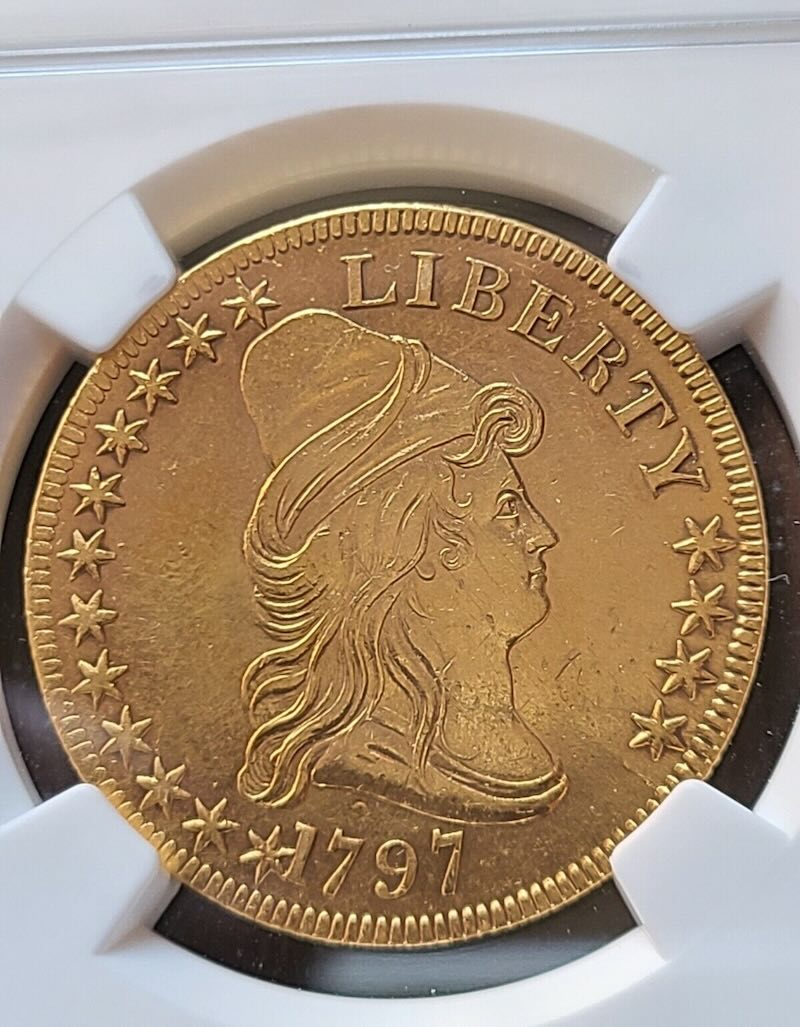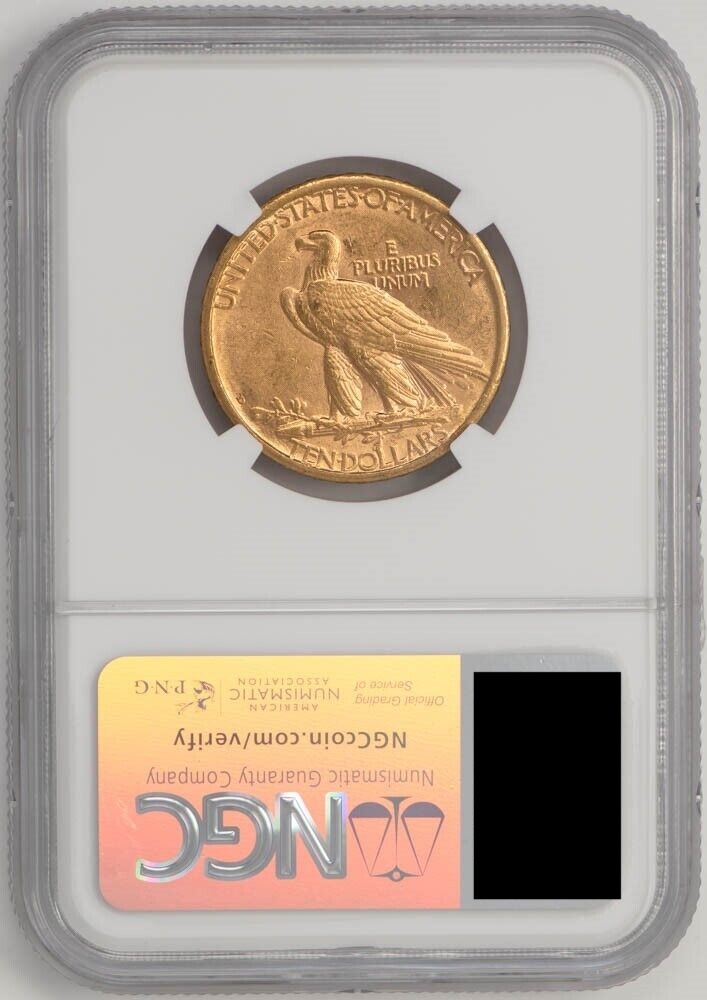Owning and appreciating gold coins can be both a collection and an investment. For some, the intention is towards the historical and aesthetic value of the coins. For others, the focus is on the potential appreciation of the coins’ value over time.
Investing in $10 Eagle gold coins is relatively straightforward, especially for those with an interested in numismatics or tangible assets.
The $10 Eagle gold coin contains 0.48375 troy ounces of gold and are made from an alloy of 90% gold and 10% copper. As tangible assets, these coins are valued not only for their gold content but also for their historical and collectible value.
The $10 Eagle was minted from 1795 until 1933 when FDR declared that all gold be seized, melted down and held as reserves in the Fort Knox Bullion Depository.
Throughout the years of minting there were three major designs that were issued in different eras.
- The Capped Bust Series from 1795-1804
- The Liberty Series or Coronet Head from 1838-1907
- The Indian Head Series from 1907 until 1933
Capped Bust $10 Eagle Gold Coin (1795-1804)

The Turban Head $10 Gold Eagle coin, also known as the Draped or Capped Bust Eagle, was a series of gold coins minted by the United States Mint from 1795 to 1804. The designer of this coin was Robert Scot, who was the first Chief Engraver of the United States Mint.
The Turban Head Eagle featured a portrait of Lady Liberty wearing a turban-like cap on the obverse, while the reverse showcased a bald eagle with a shield on its chest.
In the early years, mintages of these coins were extremely low. The first mintage to exceed 10,000 coins was in 1799, when 37,449 $10 gold coins were minted.
Liberty $10 Eagle Gold Coin (1838-1907)

The Liberty Gold series was designed by Christian Gobrecht, who became the third Chief Engraver of the U.S. Mint.
His classical rendition of Lady Liberty was inspired by neoclassical art prevalent during his time.
The design of the first Liberty Head $10 Gold Eagle was inspired by the portrait of Venus in Benjamin West’s Painting Omnia Vincit Amor (Love Conquers All).
It features a bust of Liberty facing left, wearing a coronet inscribed LIBERTY with thirteen stars encircling the bust and the date positioned below. Her hair is knotted in the back with hanging curls.
The reverse depicts an eagle holding an olive branch and arrows, surrounded by the inscriptions UNITED STATES OF AMERICA and TEN D. Mintmarks are situated in the area below the eagle.
President Theodore Roosevelt was not a fan of the Liberty series. He considered the designs to be unattractive and lacking in artistic merit.
Roosevelt’s quest for coins that reflected the nation’s grandeur led to the commissioning of renowned sculptor Augustus Saint-Gaudens, culminating in the 1907 introduction of the Indian Head $10 Eagle Gold Coin.
Indian Head $10 Eagle Gold Coin (1907-1933)
The Indian Head $10 Eagle gold piece was minted from 1907 to 1933.
The overall design of the $10 Indian gold coin is highly detailed and intricate and is a testament to the American spirit, artistry and craftsmanship of the era.

The public reaction to the Indian Head $10 Eagle gold piece design in 1907 was mixed, with a particular point of contention being the omission of the motto “IN GOD WE TRUST” on the initial coins.
This omission was noted by the public and the coins were criticized for it.
Teddy Roosevelt penned a famous letter explaining his feelings on the matter, in favor of keeping the motto off the coin.
However, the U.S. Mint responded to the public’s concern and the motto was added to the coin in 1908.
Less than 450,000 coins of the NO MOTTO variant of the Indian Head $10 Gold coin were minted before the US Mint updated the design. It’s unknown how many of these coins survived the gold seizure in 1933.
In today’s market, these coins are rare and some variants in higher Mint State (MS) condition can fetch up to $100,000 at auction.
While coins in lower MS condition, such as MS-63 are more affordable with room to appreciate in value.

The obverse of the coin features a unique and iconic design of Lady Liberty, inspired by the Greek goddess Nike. She is depicted wearing a Native American headdress, symbolizing the American West. This design was originally created by Augustus Saint-Gaudens and was adapted for the coin. The word “LIBERTY” is inscribed on the headband of the headdress, and the year of issue is at the bottom.
The reverse of the coin showcases a standing bald eagle perched on a bundle of arrows and an olive branch. This design represents both the strength and the peace-loving nature of the country.
The motto “E PLURIBUS UNUM” (meaning “Out of Many, One”) is inscribed on the left, and the denomination “TEN DOLLARS” is on the right. The words “UNITED STATES OF AMERICA” encircle the top of the design, with the motto “IN GOD WE TRUST” added in 1908, positioned to the left of the eagle.
